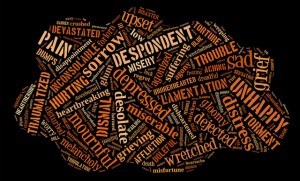
Although living in Jasper can sometimes feel a bit like a fairytale, with woodland creatures greeting us around every bend and the mountains providing a picturesque backdrop for our romantic adventures, the park’s storybook appearance doesn’t preclude Jasperites from life’s struggles.
The community’s mental health therapists can attest to that. Laurie-Ann Reddick described her workload as “full-on busy” and said, even if funding was doubled, allowing for four therapists instead of two, it would still be full-on.
According to the Canadian Mental Health Association (CMHA), 20 per cent of Canadians will experience a mental illness in their lifetime, with eight per cent of adults experiencing major depression at some point in their lives.
Mental illness spans a wide gamut, from mild depression to manic depression, schizophrenia, anxiety disorders, bipolar disorders, eating disorders and personality disorders. According to the CMHA, the stigma surrounding these illnesses is one of the biggest barriers preventing people from seeking out treatment.
“People aren’t typically going to walk into a clinic and say, ‘I have a mental illness.’ It’s not going to happen,” said Lisa Darrah, manager of Community Outreach Services (COS).
That’s why COS has created a model that welcomes people into the office on a drop-in basis. It allows outreach workers to keep an eye on their clients, while providing a place for people to go each day, even if it’s just for some socialization.
“The drop in program is one of the best ideas. People can just drop in, they have a reason to get up in the morning: get up, pop in and have a coffee.
“The hope with this model is that our audience will be people that are coming in before it’s hit a crisis point—that’s where the prevention comes in,” Darrah explained. “We can notice when some of our clients are escalating, sometimes it’s cyclical and seasonal, so we’ll notice when there’s a change in behaviour and we’ll be able to refer and reconnect them to mental health services—that’s our goal.
“We do that in very subtle ways. So, you can come in for coffee, you might go on a mountain adventure program, you might come in here to play guitar and then overtime, once we’ve built trust with those clients, then they might disclose to us that they have an issue.”
Although COS makes weekly referrals to Jasper’s mental health therapists, Darrah said that doesn’t always mean people are ready to seek out that help.
“But,” she said, “we’ll try and support them in making that appointment as they feel comfortable and visa versa, if somebody does walk into mental health and they can see that it would be good for them to have a worker to do a home visit or start engaging with them or maybe get them involved in some of our social programming, they’ll give us a heads up too, so there’s ongoing dialogue between all of the agencies in Jasper.”
That dialogue extends beyond COS and mental health. It also includes the Jasper RCMP, bylaw and other agencies in town, to ensure everyone is on the same page and working together.
“Jasper’s pretty progressive. We work really well together as a community,” said Darrah. “We’ll even get neighbours giving us a heads up that someone might be isolated.”
Beyond COS, there are also other opportunities for Jasperites to seek out treatment and support.
They include making a doctor’s appointment, visiting the emergency room, calling the toll free Mental Health Help Line (1-877-303-2642) for 24-hour support, or making an appointment with a mental health therapist through the new intake line (1-844-817-5009)—there’s no referral needed.
The community also has a private therapist, Michelle Cherniawsky, whose services are covered by the Employment Family Assistance Program.
And, for those who have transportation and don’t feel comfortable seeking help in town, there is also the option of meeting with a therapist in Hinton. (That can be done by calling the same intake line as listed above.)
Reddick admitted the services offered in Jasper are more limited than in the city—for instance, the closest inpatient treatment centres are in Edmonton, Calgary and Red Deer and the only way to see a psychiatrist is by teleconference—but she said because of the community’s willingness to work collaboratively, the services that do exist are strong.
She also noted that the community has a large part to play in ensuring the mental health of its residents.
“Sometimes when people are depressed, they tend to withdraw and isolate, so when family and friends are aware of that and can be there and be supportive, that’s really helpful,” she said, noting that treating mental illness isn’t just about medication and talk therapy, it’s about finding support from friends and family, making connections in the community, staying physically active, getting a good sleep and taking time for self care.
“I’d say at some point we all have mental health issues—we all deal with loss, tragedy, death, grief, bereavement, adjustment, we all have our own issues that make us anxious and sometimes may be hard to deal with, we all have periods where we feel low—but most people, not all people, [can overcome it] between family and friends, self care, exercise, good nutrition—it’s not just a pill or talk therapy—it’s a whole lifestyle support.
“In a community like Jasper if you’ve got a support network, that can be invaluable because there is no magic fix.”
Nicole Veerman
[email protected]
